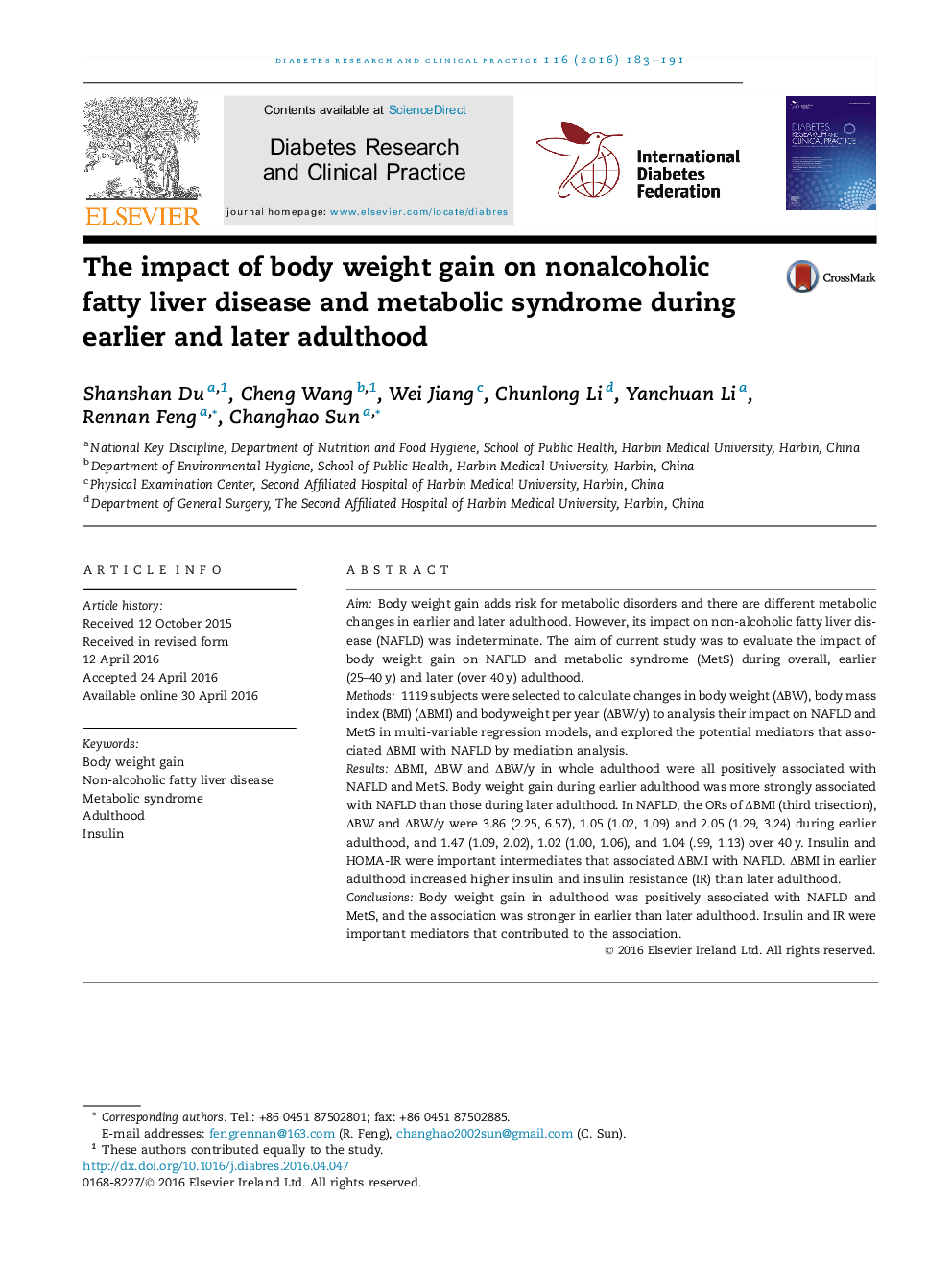| Article ID | Journal | Published Year | Pages | File Type |
|---|---|---|---|---|
| 5898986 | Diabetes Research and Clinical Practice | 2016 | 9 Pages |
AimBody weight gain adds risk for metabolic disorders and there are different metabolic changes in earlier and later adulthood. However, its impact on non-alcoholic fatty liver disease (NAFLD) was indeterminate. The aim of current study was to evaluate the impact of body weight gain on NAFLD and metabolic syndrome (MetS) during overall, earlier (25-40Â y) and later (over 40Â y) adulthood.Methods1119 subjects were selected to calculate changes in body weight (ÎBW), body mass index (BMI) (ÎBMI) and bodyweight per year (ÎBW/y) to analysis their impact on NAFLD and MetS in multi-variable regression models, and explored the potential mediators that associated ÎBMI with NAFLD by mediation analysis.ResultsÎBMI, ÎBW and ÎBW/y in whole adulthood were all positively associated with NAFLD and MetS. Body weight gain during earlier adulthood was more strongly associated with NAFLD than those during later adulthood. In NAFLD, the ORs of ÎBMI (third trisection), ÎBW and ÎBW/y were 3.86 (2.25, 6.57), 1.05 (1.02, 1.09) and 2.05 (1.29, 3.24) during earlier adulthood, and 1.47 (1.09, 2.02), 1.02 (1.00, 1.06), and 1.04 (.99, 1.13) over 40Â y. Insulin and HOMA-IR were important intermediates that associated ÎBMI with NAFLD. ÎBMI in earlier adulthood increased higher insulin and insulin resistance (IR) than later adulthood.ConclusionsBody weight gain in adulthood was positively associated with NAFLD and MetS, and the association was stronger in earlier than later adulthood. Insulin and IR were important mediators that contributed to the association.
